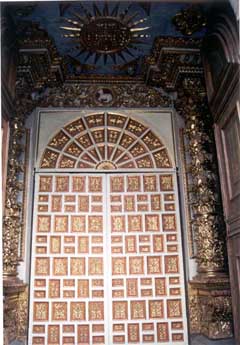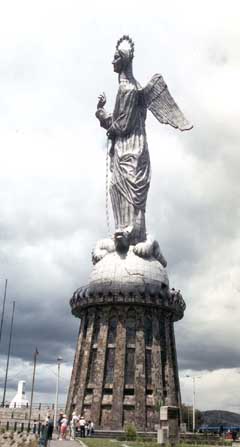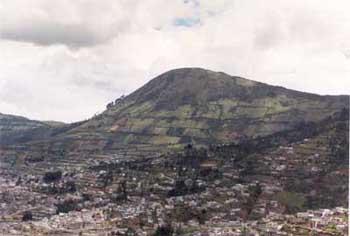
June 17, 2001 - Sunday - Quito, Ecuador
We started our visit in Quito. Overall there are about 13 M people in Ecuador, with about 2 M in Quito alone. The city is 3,000 meters above sea level or about the elevation of the top of Mammoth Mountain. Quito is 55 Km north to south.
Ecuador is divided into three regions: north, central, south with Quito as the center of the central area.
Ecuador gained its sovereignty in 1830 from Spanish rule; in 1832 it annexed the Galapagos; General Flores was 1st president of Ecuador.
The Galapagos Islands are located 600 miles west of Ecuador; consist of13 major islands; 6 small islets; 3 - 5 million years old (except Fernandino Island, the youngest at 200,000 years).
Charles Darwin was just 22 years old when he sailed on the HMS Beagle to survey the South American coast starting in 1831. He spent only 5 weeks in the Galapagos (September - October 1835) and wrote his book, Origin of Species, 10 years later, after completing much more comprehensive research on barnacles.
We started out on a bus to the Guapulo area in the Tubaco Valley, in the southern part of Quito. Luis Reascos is our city guide in Quito
- El Mirador de Guapulo - church built to honor the Guadelupo Rose plantations
- Hotel Quito - a 5 star hotel built in 1978; now owned by the Social Security Administration; in restoration
- Ecuadorian Central Bank Museum
We returned by bus to the Old Town Quito, in the north-west of the city.
Palace of the Congress:
Stone carved mural of the history of Ecuador Mural on either side of the entrance, begins on the left side, reads to the right Flags of Ecuador's 22 provinces La Place Granda/Independence Square:
- Municipality Building
- Palace of the Government
- Archbishop's Palace
- Majestic Hotel, now residence of the Major of Quito
- Catholic Church (Main Cathedral) built in 1534
In the center of the square:
- Statue to the heroes of the 10th of August
- 1809 - Condor and Lion with Arrow (Spanish) - not a successful revolt
- 1810 - Museum of the second attempted revolution
- El Centro Cultural Metropolitan - 1657
- Museo Alberto Mena Caamano:
- Prison of the 9th of August 1810
Iglesia de la Companiea de Jesus (Jesuits Church, photo right) - took 60 years to build, 1605 - 1765. Unfortunately, we were not able to see the interior covered with gold. Just the gold covered doorway.
San Francisco Church - the original church of Quito built in 1536:
- Cantoomia Church
- Buenaventura Church
Basilica of the National Vote: 80 years in construction - cathedral on the hill
We saw a troop of marching students in about their 4th year of high school. In Equador, student have the option of performing social work instead of mandatory military service
We tried to buy a sample of the native Ecuadorian "sugar cane liquor", called "Puro". When we tried to depart Quito with the bottle, we had to return it as Customs said it was too flammable to take on board the airplane.
Statue (photo right) on Panecillo Hill was a gift to the people of Ecaudor from France: panecillo means "little bread"
- depicting the story of Apocalypse 12:1 - 3: "woman battling the red monster"; or the Virgin with Wings
- Panecillo Hill - 42 1/2 meters
- November 1955 - began the base
- Completed in 1975
On this our first day, we ate lunch at one of Jonathan's two favorite restaurants in Quito. A little sleepy from all the travel.Shopping recommendations: on Colon Avenue
- Olga Fiche
- Galleria Latina




